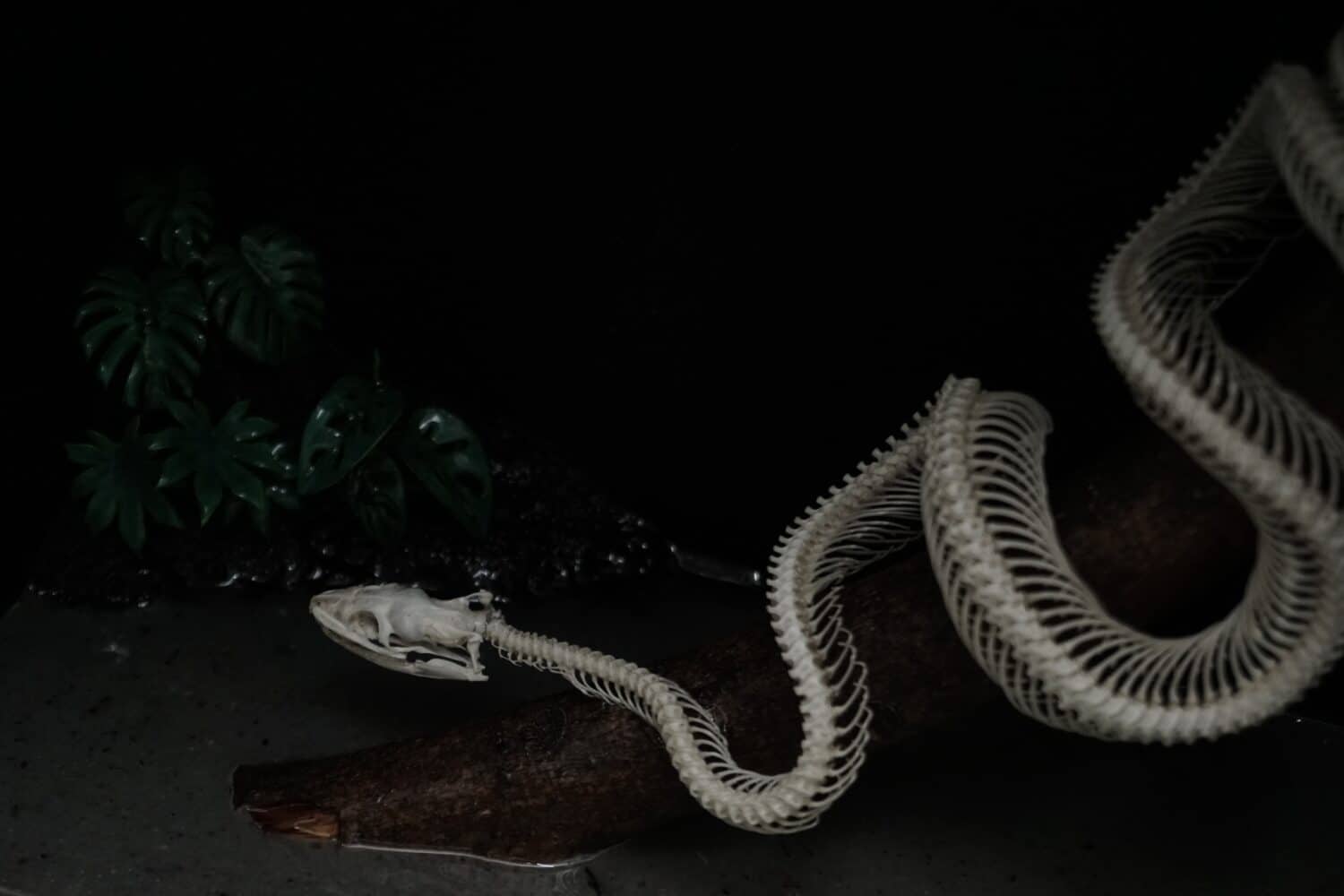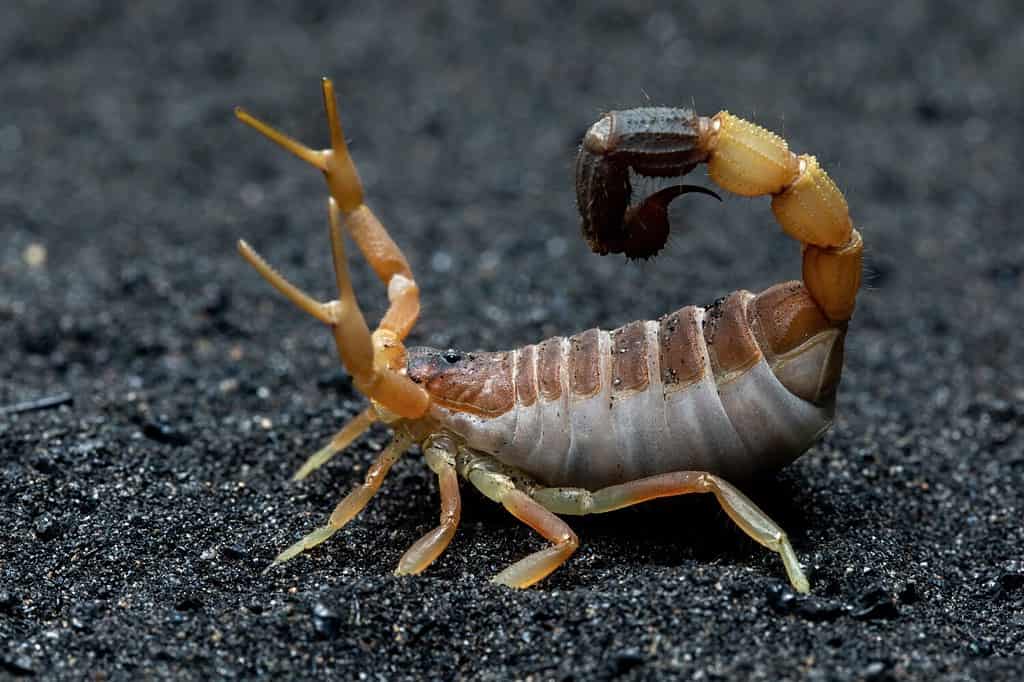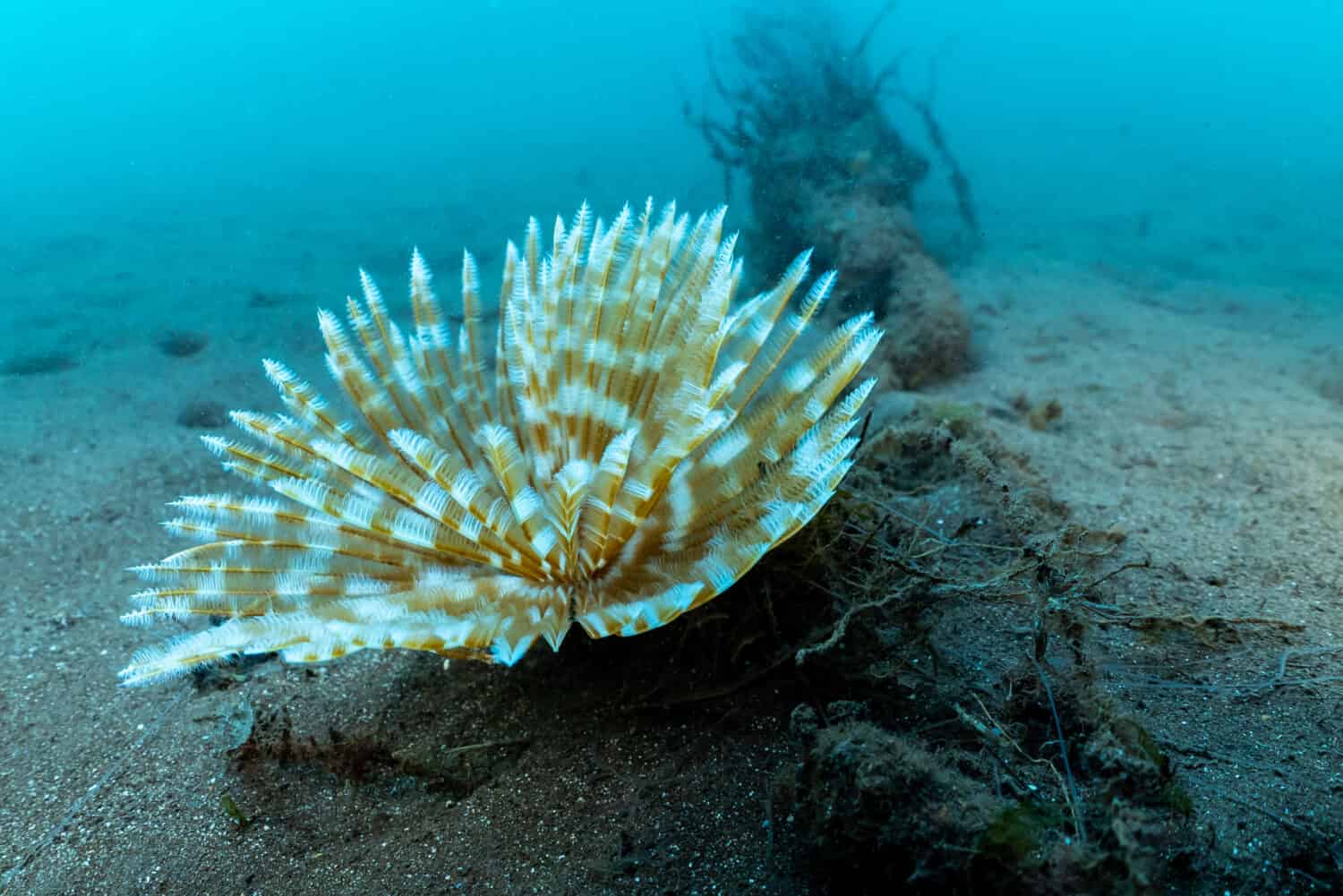A skeletal system is the framework of bone, cartilage, chitin, or other material that supports the structure and movement of an animal’s body. There are three primary types of skeletal systems in the animal kingdom — endoskeletons, exoskeletons, and hydroskeletons.
While some animals, like corals, simply have hard and immobile parts that support their bodies, most animals, whether vertebrate or invertebrate, have some type of skeletal system. Some even have multiple types! These systems consist of multiple parts that all work in unison to perform their support and mobility functions.
Let’s find out about the different types of skeletal systems below:
Endoskeleton
You’re probably already familiar with the first type of skeleton — it’s the kind you have! All vertebrate animals, including humans, make use of an endoskeleton to support their bodies. This type of skeletal system derives its name from the Latin prefix endo-, meaning “inside, internal”, and exists entirely within the body.
Most endoskeletons consist of many rigid parts — bones — that protect internal organs and act as a frame for muscles and ligaments. These provide the overall shape and structure of the body. Without bones, your muscles wouldn’t be able to hold your body upright.
Bones are connected to one another at joints, which allow each bone to move independently. They also allow the body to flex as a whole, providing stability, aiding in balance, and allowing for a wide range of movements. The joints themselves are made of cartilage, a type of smooth, firm connective tissue, which prevents bones from rubbing together and absorbs the shock of daily activities like running, jumping, and walking. Ligaments attach to the bones on either side of the joint, surrounding the cartilage and binding everything together. In addition to cartilage and ligaments, joints contain another important component — synovial fluid. This thick fluid lubricates the connection between the bone and cartilage. Without it, both parts would quickly wear away.

Cartilaginous joints are key components of any endoskeleton. Snakes are great examples of the incredible range of motion that this type of joint can provide while still supporting the structure of the body.
©El Arquitecto de Huesos/Shutterstock.com
Exoskeleton
While we and many other animals have endoskeletons, ours are the exception rather than the rule. Most animals in the world have their skeletal systems on the outside of their bodies! Whereas we have soft, flexible skin, these animals have a hard outer shell that protects their soft insides. This type of skeleton, the exoskeleton, derives its name from the Latin prefix exo-, meaning “outside, external”. In many cases, it looks and functions just like a set of plate armor!
Inside the suit of armor are many connection points for muscles and other connective tissues. These span the body’s joints and allow varying degrees of motion just like ours do.
Because of their incredible evolutionary success, exoskeletons developed independently in many separate animal lineages. While some vertebrates, like turtles and tortoises, have both an endoskeleton and an exoskeleton, invertebrates like arthropods and mollusks make the most use of the exoskeleton by far.
Arthropod Exoskeletons
In most arthropods, like insects and arachnids, the exoskeleton is a shiny outer layer made primarily of chitin. In others, like crustaceans, the addition of calcium carbonate to the mix produces a much harder, thicker shell. These animals all have segmented bodies and jointed appendages with tough but flexible chitinous joints.

Arthropods like scorpions have hard, segmented bodies with tough, flexible joints in between. This type of skeletal system offers a high degree of protection but sacrifices flexibility in doing so.
©Lauren Suryanata/Shutterstock.com
While being sealed inside a hard suit of armor is great for protection, it can be pretty constricting after a while. To allow their bodies to grow, arthropods eventually need to take that armor off. They do this in a process called molting, where they separate from their exoskeletons and leave them behind.
By doing this, however, arthropods leave themselves vulnerable. Molting isn’t an easy process. As they separate from their exoskeletons, many arthropods are completely immobile and cannot even breathe. When they finally emerge, they are left with a very thin and comparatively soft protective covering. They must be careful while their soft skin — the epidermis — secretes the chitin that gradually hardens into a new, properly sized suit of armor.
Mollusk Exoskeletons
Not all animals need to shed their exoskeletons to grow. Vertebrate animals like turtles develop shells that are fused with their spinal columns and cannot be removed. These shells grow with them as they age. Mollusks, like snails and bivalves, also form exoskeletons that grow with them throughout their lives. They often make their shells primarily out of calcium carbonate.
Shelled mollusks produce their hard shells from a special, muscular organ called a mantle, which functions similarly to our own fingernail beds. The mantle surrounds the animal’s soft tissue and secretes both calcium carbonate and an organic matrix for the calcium carbonate to bond to. As the outside of the shell wears away or suffers damage, new material replaces it from the mantle surface. During times of dormancy or extreme stress, a mollusk may slow or entirely stop the production of new shell material. Later, when it resumes shell construction, a line remains visible on the shell surface representing the change in growth rate. In some species, external growth lines can also represent a full year of the animal’s life.
The size and shape of mollusk shells can vary wildly between species. Some are single and whorled or conical while others form in wide, flat pairs. For example, the giant clam (Tridacna gigas), the world’s largest marine bivalve, produces a huge, hinged shell with deep, wavy margins. In contrast, Acmella nana, the world’s smallest snail, lives on land in a tiny spiral shell that is less than a millimeter in height!

The giant clam,
Tridacnas gigas,uses its mantle to produce a thick and massive shell. The empty shell in the photo above clearly shows the external growth lines formed over the course of the clam’s life.
©Fernando Losada Rodríguez, CC BY-SA 4.0 <https://creativecommons.org/licenses/by-sa/4.0>, via Wikimedia Commons – License
Hydroskeleton
The hydroskeleton, or hydrostatic skeleton, is the third type of skeleton that animals employ to support their bodies. Though it is technically an endoskeleton because it is inside of the body, it is quite different from the other skeletal systems in that it does not require rigid components to do its job. Instead, the hydroskeleton relies on a flexible, fluid-filled compartment called the coelom to provide structure and mobility to the body. As the muscles that line the outer surface of the coelom work in different directions, they squeeze against the fluid inside. Because the fluid is incompressible, it provides resistance to the muscles and allows the animal to move its body.
Many animals across many taxonomic groups, especially invertebrates, employ hydroskeletons to support themselves and their body parts. Worms of all kinds have this type of skeleton. The terrestrial earthworm has a body comprised of many hydrostatic rings that allow the entire organism to expand and contract. In the ocean, feather duster worms like Sabellastarte spectabilis use their hydroskeletons to emerge from and recede into their leathery tube dwellings. Without their hydroskeletons, they would be unable to control their soft, squishy bodies.

Feather duster worms like
Sabellastarte spectabilisuse their hydroskeletons to pull themselves inside of their tube dwellings to avoid danger.
©Silent O/Shutterstock.com
This simple type of skeleton works for complicated movements as well. Cephalopods like cuttlefish, squids, and octopuses are highly dexterous and rely on their hydroskeletons to perform a variety of complex tasks. Starfish rely on theirs to support their ossicles, flex their rays, and move their thousands of tiny tube feet.
Some animals use a hydroskeleton in combination with another type of skeletal system. Spiders, for instance, have a muscular exoskeleton that allows them to contract their limbs, but rely on a hydrostatic skeleton to extend them! The two skeletal systems must work in conjunction at all times to properly support the animal.



